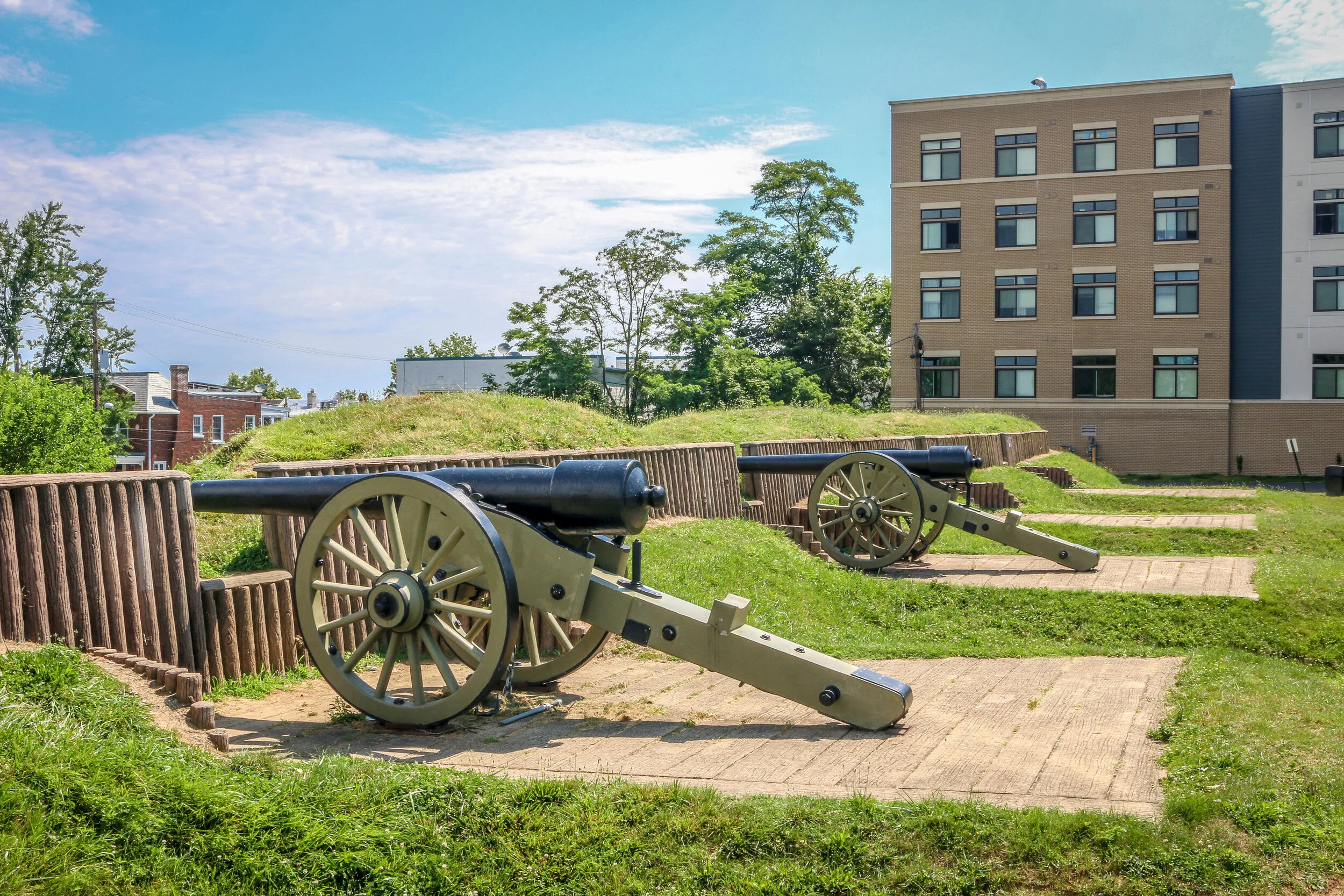After overcoming Union General Lew Wallace and his men at the Battle of Monocacy on July 9th, 1864,, Confederate General Jubal Early continued his march towards the Capital City of Washington D.C. The Confederate soldiers made the march in two long, hot days as the area was in the middle of one of the hottest and driest summers on record. Thankfully, Wallace had delayed the Confederates long enough for General Grant to send reinforcements via steamship from Richmond who soon took up position in the northern section of the circle of forts surrounding the city. Fort Stevens guarded the 7th Street Pike, one of the main roads into the city (now Georgia Avenue).
The armies exchanged fire on July 11th and 12th, but Early felt the city was too heavily defended to mount a full scale attack. Both sides lost men in the skirmishing, but casualties were relatively light by Civil War standards. Notably, President Abraham Lincoln came to Fort Stevens on July 12th with his wife, Mary. The two came under fire while there, the only time in American history that a sitting president was in the direct line of enemy fire. A memorial stone on the parapet of the fort marks that location today. That evening, Early would withdraw his men through Maryland and cross the Potomac back into Virginia, marking the end of the final Confederate attack into the North. They paused briefly en-route to bury 17 of their dead comrades at Grace Episcopal Church in Silver Spring.
The Union Quartermaster General Montgomery Meigs seized an acre of land just up the road from Fort Stevens on which to bury the Union dead. This plot, which had been a fruit orchard owned by James Malloy, was designated as Battleground National Cemetery and is one of he smallest National Cemeteries in the country. While 40 men were buried there at the time, anyone who had served in the battle was permitted to be buried there upon their death. Only one soldier took them up on that offer and Edward R. Campbell was buried in the cemetery in March 1936 at the age of 92.
Fort Stevens was restored by the Civilian Conservation Corps during the 1930s and, while small, is a fascinating place to visit. We enjoyed listening to a self-guided tour podcast about the fort from the National Park Service while we were there. Battleground National Cemetery is also small, but is a beautiful and historic place hidden in plain view right on Georgia Avenue. We were sorry to find the Confederate memorial, which has marked the grave of 17 unknown Confederate soldiers at Grace Episcopal Church in Silver Spring for a century and a half, vandalized and pulled down. In my opinion, while these soldiers attacked my city and were engaged less than two and a half miles from my front door, I see no need to desecrate their graves. At this point I hope the marker is removed and they may quietly rest in peace.
Travel on towards Richmond in the next installment of Civil War Chronicles which you can find by following the link below.
The photos below come from a recent visit to Fort Stevens in Washington D.C. - site of the only battle fought inside D.C. during the Civil War, and of Battleground National Cemetery up the street. The final photo came from Grace Episcopal Church in Silver Spring, MD. Civil War Chronicles will trace the major battles of the Eastern Theater of the war through photos and brief histories. Click on any photo to enlarge it. All photos are available for sale and licensing. For more information, check out the National Park Service’s Monocacy Battlefield website HERE.

